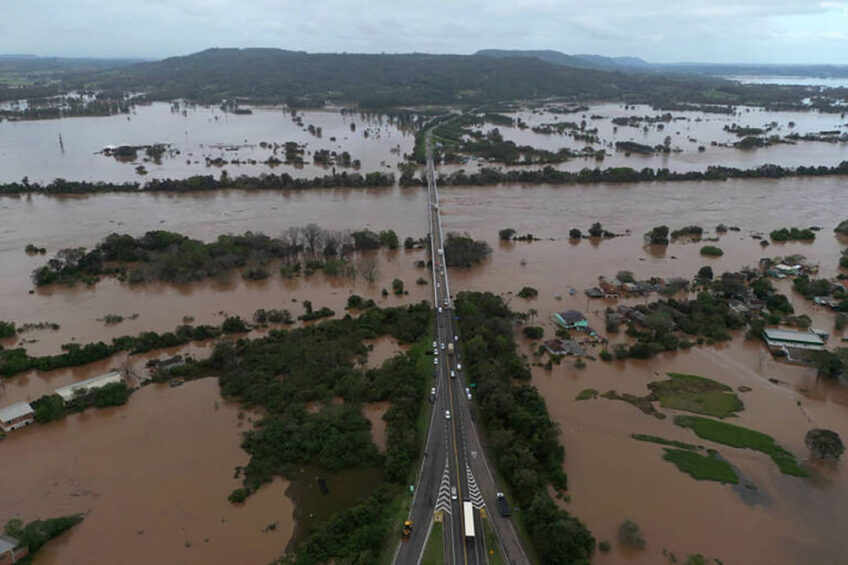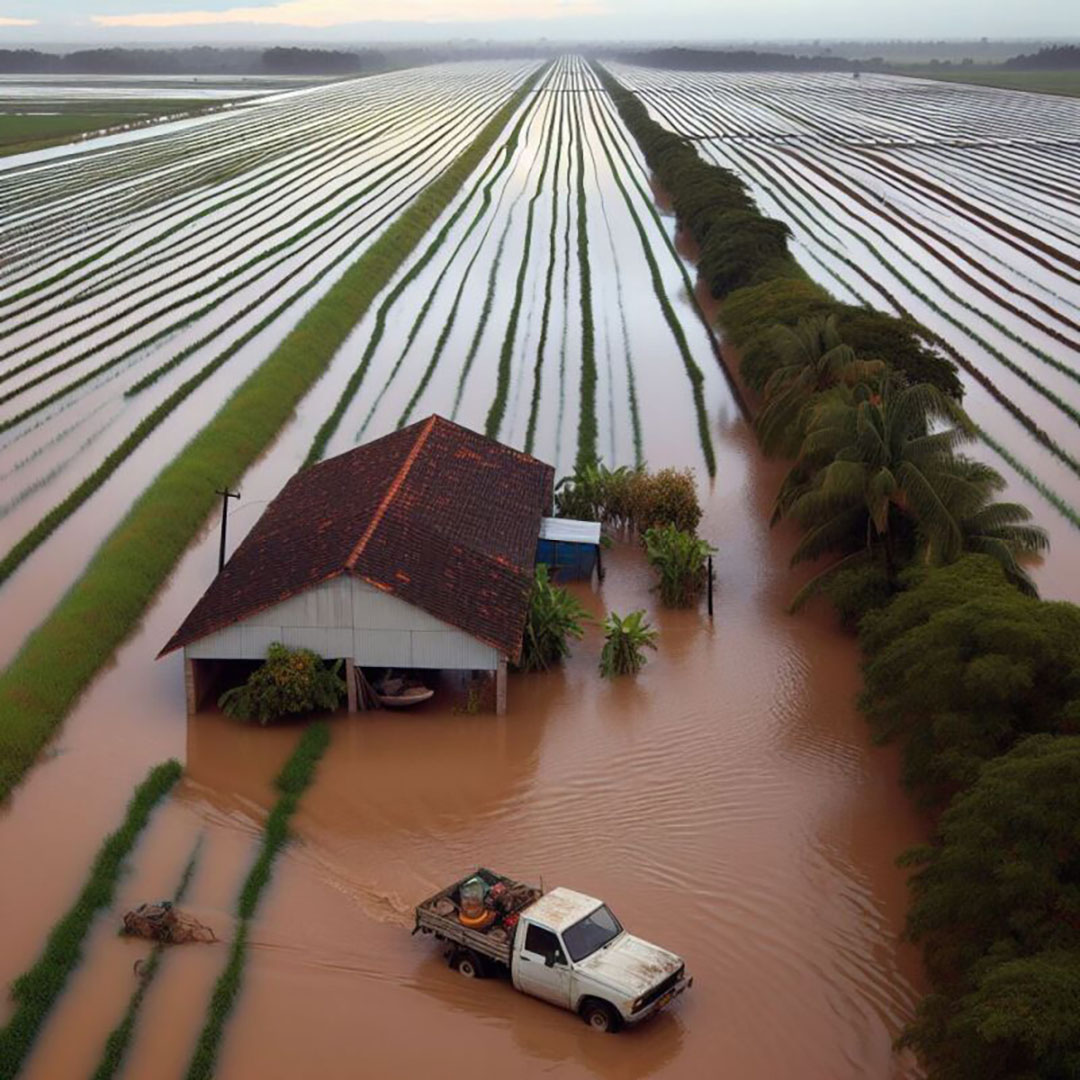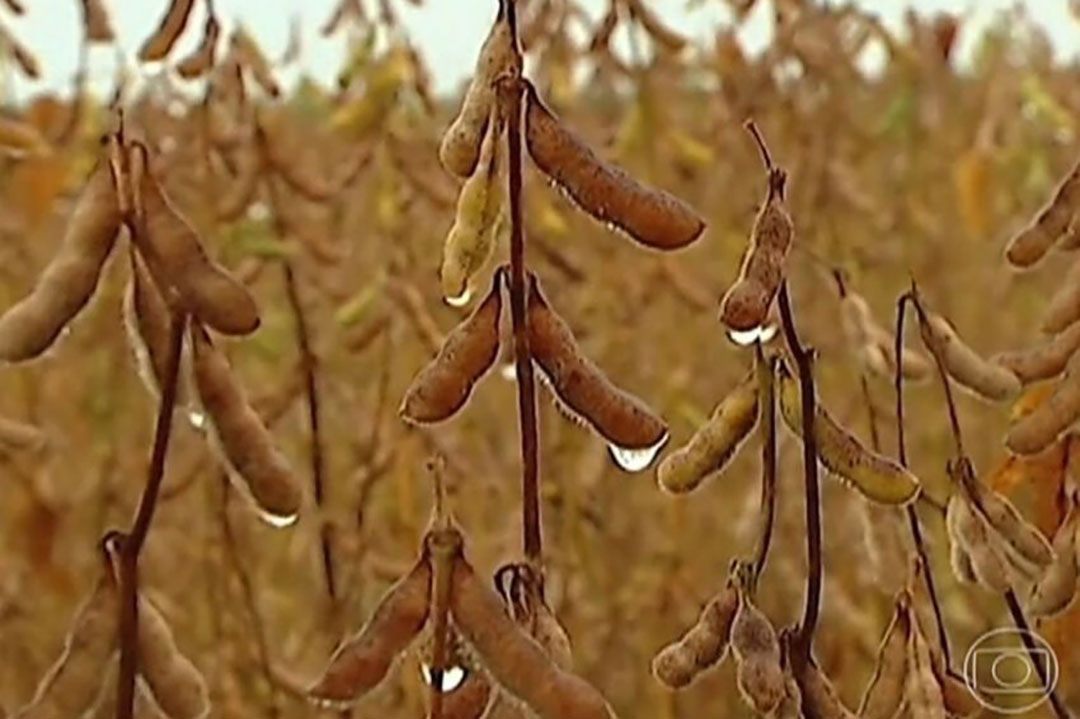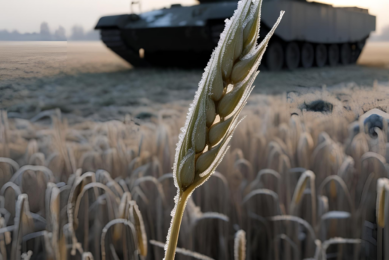Floods in Brazil might devastate up to 9 million tons of grain

Rio Grande do Sul state has already received rain expected for 5 months in a few days.
Floods in Rio Grande do Sul are expected to devastate between 6 and 9 million tons of grains, according to estimates from Cogo Intelligence in Agribusiness Consultancy.
According to consultant Carlos Cogo, the state is the second-largest Brazilian soy-producing state and had harvested 70% of the total area until the floods began on April 29.
The remaining 30% represents around 2 million hectares and 6.5 million tons. According to the expert, precise estimates of losses are not yet possible.

In any case, this volume at risk represents 5% of the estimated harvest for the country, around 147 million tons.
In the case of rice, Rio Grande do Sul is the largest producing state in Brazil. To date, the state has harvested 78% of the rice area for the 2023/2024 harvest.
The remaining 22% represents around 200 thousand hectares and 1.6 million tons. According to Carlos Cogo, it is not possible yet to accurately estimate how much of this amount is lost.
This volume under risk conditions represents a significant 16% of the estimated harvest for the country (10.5 million tons). Rio Grande do Sul’s rice harvest, estimated at 7.4 million tons before the floods, might be significantly affected.
Could create a grain deficit
It may generate a deficit in Brazilian grain supply for 2024, pressuring prices. The possible impacts are difficulties in supply in Brazil and impact on the cost of families, especially the poorest, as well as a drop in income for rice farmers.
As for corn, the summer crop (1st harvest 2023/2024) is also halted due to excessive rain and flooding. In the rest of the country, harvesting activities continue at a good pace.
By May 2, the harvest reached 83% of the total cultivated area. The total area planted with corn in the 1st harvest of 2023/2024 in Rio Grande do Sul is 6.673 million hectares.
The 17% represents around 220 thousand hectares and 1.4 million tons. This volume under risk conditions represents 6% of the 1st harvest estimated for the country, which was estimated at 23.3 million tons.
According to the consultant, it is not possible to accurately estimate how much of this amount is lost.

Rain doesn’t stop
Rio Grande do Sul witnesses the highest volume of rainfall in its history and the second highest ever recorded across the country. The scenario could worsen even further, according to forecasts for the coming days.
The accumulated rain in cities in Rio Grande do Sul between April 22 and May 6 equalled the entire average rainfall predicted for five months.
The city of Fontoura Xavier, with 778 mm, and Caxias do Sul, with 694 mm, appear at the top of the list of official data. The Vales, Planalto and Encosta da Serra regions exceeded 300 mm in one week.
All this volume resulted in the failure of dams and reservoirs, which further increased the volume of water in the river basins of Rio Grande do Sul.
Part of the phenomenon occurred by El Niño, which warms the waters of the Pacific, blocking cold fronts and concentrating areas of instability in Rio Grande do Sul.
Furthermore, the high temperature close to the equatorial belt, the transport of moisture from the Amazon and the thermal contrast with the arrival of a cold front strengthened the storms.











